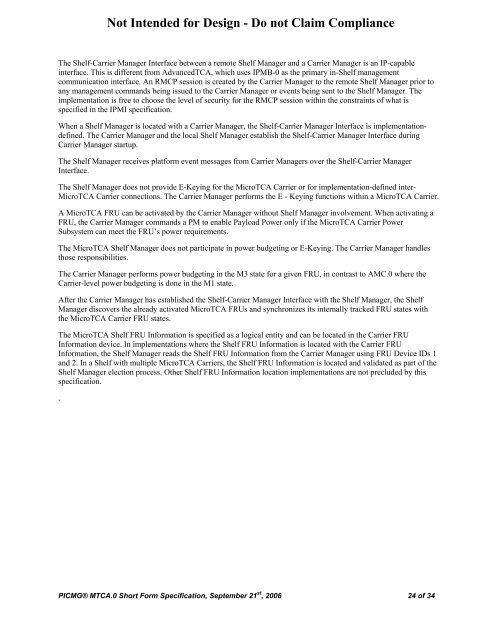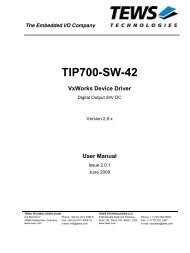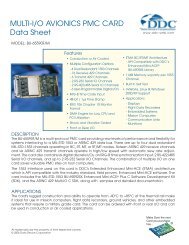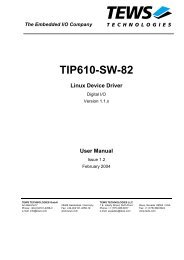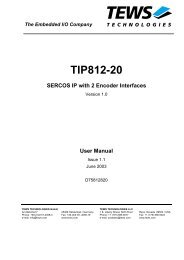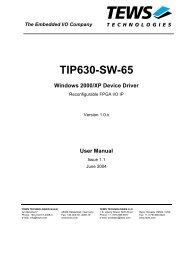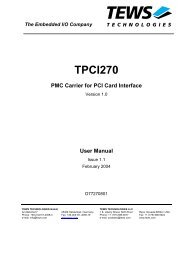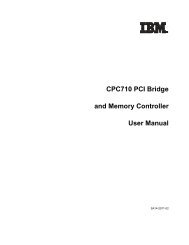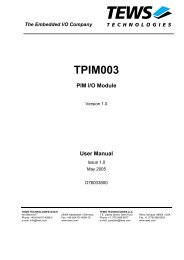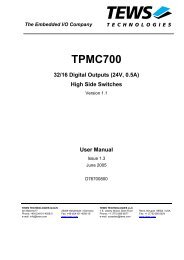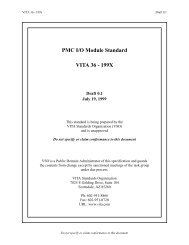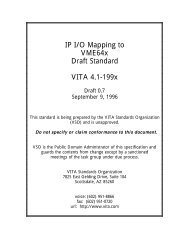MicroTCA TM - PICMG
MicroTCA TM - PICMG
MicroTCA TM - PICMG
You also want an ePaper? Increase the reach of your titles
YUMPU automatically turns print PDFs into web optimized ePapers that Google loves.
Not Intended for Design - Do not Claim Compliance<br />
The Shelf-Carrier Manager Interface between a remote Shelf Manager and a Carrier Manager is an IP-capable<br />
interface. This is different from AdvancedTCA, which uses IPMB-0 as the primary in-Shelf management<br />
communication interface. An RMCP session is created by the Carrier Manager to the remote Shelf Manager prior to<br />
any management commands being issued to the Carrier Manager or events being sent to the Shelf Manager. The<br />
implementation is free to choose the level of security for the RMCP session within the constraints of what is<br />
specified in the IPMI specification.<br />
When a Shelf Manager is located with a Carrier Manager, the Shelf-Carrier Manager Interface is implementationdefined.<br />
The Carrier Manager and the local Shelf Manager establish the Shelf-Carrier Manager Interface during<br />
Carrier Manager startup.<br />
The Shelf Manager receives platform event messages from Carrier Managers over the Shelf-Carrier Manager<br />
Interface.<br />
The Shelf Manager does not provide E-Keying for the <strong>MicroTCA</strong> Carrier or for implementation-defined inter-<br />
<strong>MicroTCA</strong> Carrier connections. The Carrier Manager performs the E - Keying functions within a <strong>MicroTCA</strong> Carrier.<br />
A <strong>MicroTCA</strong> FRU can be activated by the Carrier Manager without Shelf Manager involvement. When activating a<br />
FRU, the Carrier Manager commands a PM to enable Payload Power only if the <strong>MicroTCA</strong> Carrier Power<br />
Subsystem can meet the FRU’s power requirements.<br />
The <strong>MicroTCA</strong> Shelf Manager does not participate in power budgeting or E-Keying. The Carrier Manager handles<br />
those responsibilities.<br />
The Carrier Manager performs power budgeting in the M3 state for a given FRU, in contrast to AMC.0 where the<br />
Carrier-level power budgeting is done in the M1 state.<br />
After the Carrier Manager has established the Shelf-Carrier Manager Interface with the Shelf Manager, the Shelf<br />
Manager discovers the already activated <strong>MicroTCA</strong> FRUs and synchronizes its internally tracked FRU states with<br />
the <strong>MicroTCA</strong> Carrier FRU states.<br />
The <strong>MicroTCA</strong> Shelf FRU Information is specified as a logical entity and can be located in the Carrier FRU<br />
Information device. In implementations where the Shelf FRU Information is located with the Carrier FRU<br />
Information, the Shelf Manager reads the Shelf FRU Information from the Carrier Manager using FRU Device IDs 1<br />
and 2. In a Shelf with multiple <strong>MicroTCA</strong> Carriers, the Shelf FRU Information is located and validated as part of the<br />
Shelf Manager election process. Other Shelf FRU Information location implementations are not precluded by this<br />
specification.<br />
.<br />
<strong>PICMG</strong>® MTCA.0 Short Form Specification, September 21 st , 2006 24 of 34


